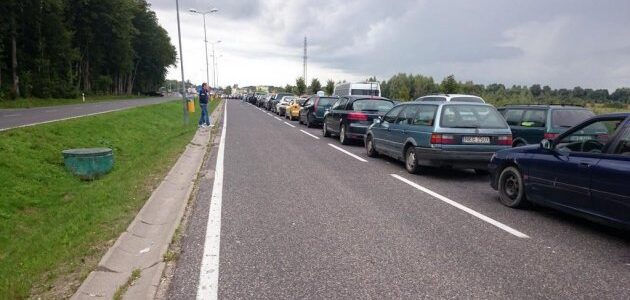
The number of crossings of Ukraine’s border in the last week of summer, from August 24 to 30, decreased by 3% to 715,000, but the flow of people entering the country before the start of the new school year even increased slightly, despite massive Russian missile and drone attacks and renewed power outages.
According to the State Border Guard Service’s Facebook post, the number of entry crossings increased to 371,000 from 367,000, while the number of exit crossings fell to 344,000 from 370,000.
The number of vehicles that crossed the checkpoints over the week increased to 140 thousand from 133 thousand a week earlier, and the flow of vehicles with humanitarian cargo increased to 620 from 605.
As for the distribution of traffic by day of the week, according to the border guards, traditionally, the outbound traffic is higher on Friday-Sunday, while the inbound traffic is higher from Saturday to Monday.
The State Border Guard Service notes that as of Sunday morning, the longest queues are observed at the checkpoints on the border with Hungary – from 20 cars at Dzvinkove to 50 at Kosyno, while on the traditionally busiest Polish border, there is a queue of 25 cars at the Ustyluh checkpoint alone.
In addition, 25 cars each are waiting to cross the border at the Uzhhorod and Maly Berezny checkpoints on the border with Slovakia.
The number of people crossing the border in the last week of summer this year is roughly equal to last year’s figures: 375 thousand people entered Ukraine and 327 thousand left during the same seven days, and the flow of cars was 141 thousand.
As reported, on May 10, 2022, the outflow of refugees from Ukraine, which began with the outbreak of war, was replaced by an influx that lasted until September 23, 2022 and amounted to 409 thousand people.
However, since the end of September, possibly under the influence of news about mobilization in Russia and “pseudo-referendums” in the occupied territories, and then massive shelling of energy infrastructure, the number of people leaving has been exceeding the number of people entering. It temporarily stopped in the second half of December and early January during the holidays, but then resumed again and reached a total of 223 thousand people from the end of September 2022 to the first anniversary of the full-scale war.
During the second year of the full-scale war, the number of border crossings to leave Ukraine, according to the State Border Guard Service, exceeded the number of crossings to enter by 25 thousand, while since the beginning of the third year, the number of crossings has increased by another 77 thousand.
As Deputy Economy Minister Serhiy Sobolev noted in early March last year, the return of every 100,000 Ukrainians home results in a 0.5% increase in GDP. The Ministry of Economy has included 1.5 million people in its macroeconomic forecast for this year, while the National Bank expects an outflow of 0.4 million, which is twice as much as in 2023.
According to updated UNHCR data, the number of Ukrainian refugees in Europe as of August 19 this year was estimated at 6.084 million, and 6.655 million in the world as a whole, which is 63 thousand and 75 thousand more than two months earlier.
In Ukraine itself, according to the latest UN data as of April this year, there were 3.548 million internally displaced persons (IDPs), which is 141 thousand less than at the beginning of the year.